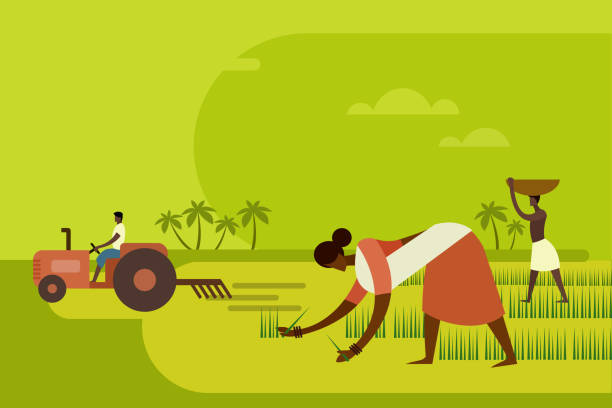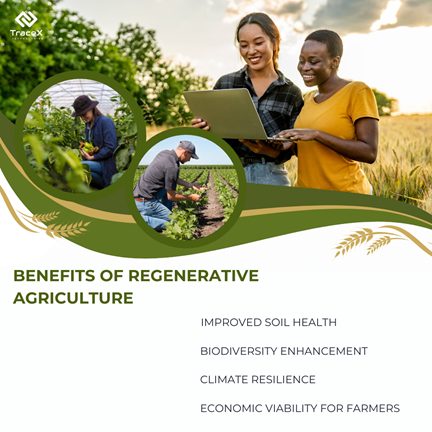Contact: +91 99725 24322 |
Menu
Menu
Quick summary: Explore how smallholder agriculture is key to regenerative farming and sustainable food systems. Learn about the challenges faced by smallholder farmers and the importance of empowering them for a resilient future.

With the global population continuing to swell, the need for sustainable food systems has never been more pressing. Smallholder agriculture, which involves family farms typically cultivating less than two hectares, plays a crucial yet often overlooked role in addressing this challenge. These farmers not only produce a significant portion of the world’s food but also hold the key to regenerative farming practices that restore soil health, enhance biodiversity, and combat climate change.
However, many smallholder farmers face substantial barriers, such as limited access to resources, technology, and market opportunities. This situation not only threatens their livelihoods but also undermines the potential for regenerative agriculture to create resilient and sustainable food systems. In this blog, we will explore how empowering smallholder farmers is essential for unlocking the full benefits of regenerative farming, creating a more sustainable future for all.
Key Takeaways
Smallholder agriculture is all about family-run farms that are usually pretty small, often less than two hectares (or about five acres). These farms are vital to the world’s food supply, producing a significant amount of the food we eat, especially in developing countries.
Imagine a farmer who grows vegetables, grains, or fruits to feed their family and their community. They often rely on traditional farming methods and local knowledge passed down through generations. Smallholder farmers play a huge role in supporting local economies and ensuring food security, but they face many challenges.
Many smallholder farmers struggle with limited access to resources like seeds, fertilizers, and water. They might not have the latest technology or the money to invest in better farming practices. This can make it tough for them to grow enough food or earn a decent income.
Despite these challenges, smallholder farmers are incredibly resilient. They’re often the first to adopt new ideas, like regenerative farming, which focuses on restoring the health of the soil and the environment. By investing in smallholder agriculture, we can help create a more sustainable food system that benefits both farmers and consumers alike.
Our analysis shows that in three countries—India, Ethiopia, and Mexico—nearly 80 percent of all smallholder farmers could be affected by at least one climate hazard by 2050.
Moreover, climate change will affect land suitability for crop production. For example, by 2050, India could lose 450,000 square kilometers of land currently suitable for rainfed rice cultivation.

Smallholder farmers can derive numerous benefits from practicing regenerative agriculture, which is a holistic approach to farming that focuses on restoring and enhancing the health of the soil, promoting biodiversity, and improving overall farm sustainability. Here are some key benefits for smallholder farmers:
Sandesh Deranna, Crop Lead- Coffee Value Chain, TechnoServe, said, “We are always on the lookout for digital tools that will help farmers improve their incomes and build a better future for themselves. TraceX was exactly the solution we were looking for. Through their blockchain-enabled traceability platform, TraceX empowers farmers by giving them more visibility, improving efficiency and profitability, building trust and transparency, leading to a better connect with the end consumers.”
The demand for sustainable and regenerative agriculture products is steadily increasing as consumers become more conscious of the environmental and social impacts of their food choices. This demand presents significant opportunities for smallholder farmers, offering several benefits that can help uplift their livelihoods and agricultural practices.
According to a study by Nielsen, 73% of global consumers say they would definitely or probably change their consumption habits to reduce their impact on the environment.
Sustainable and regenerative agriculture products often command premium prices in the market due to their perceived environmental and social benefits. Smallholder farmers who adopt these practices can tap into niche markets and access buyers who prioritize ethically and sustainably produced food. This provides an opportunity for smallholders to increase their income, improve profitability, and reduce market dependence.
Also, by embracing sustainable and regenerative agriculture practices, smallholder farmers
can diversify their production systems and offer a wider range of products. For example, integrating agroforestry , organic farming, or permaculture techniques allows farmers to cultivate diverse crops, raise livestock, and incorporate value-added products. This diversification helps reduce risks associated with single-crop dependency and enhances the resilience of smallholder farmers in the face of market fluctuations and climate uncertainties.
Additionally, regenerative agriculture practices focus on optimizing resource use and reducing input costs. These practices promote efficient water management, soil health improvement, and natural pest control, reducing the need for costly chemical inputs. By minimizing resource wastage and adopting sustainable techniques, smallholders can reduce their production costs, improve farm efficiency, and enhance overall profitability.
Sustainable agriculture practices often emphasize diverse crop production and nutrient-rich food systems. Smallholder farmers can utilize these practices to enhance local food security and nutrition. By cultivating a variety of crops, promoting agroecology, and practicing seed saving, smallholders can contribute to improved dietary diversity, food sovereignty, and community resilience.
Regenerative agriculture plays a vital role in achieving several Sustainable Development Goals (SDGs). It contributes to sustainable food production, climate action, biodiversity conservation, water management, poverty alleviation, responsible consumption, and partnerships for sustainable development. Overall, regenerative agriculture contributes to multiple SDGs, providing a holistic approach to sustainable development by addressing environmental, social, and economic challenges in the agricultural sector.
Smallholder agriculture faces several significant challenges that impact farmers’ productivity, livelihoods, and the sustainability of food systems.
Technology interventions play a crucial role in facilitating the transition of smallholder farmers to sustainable agriculture practices for climate change mitigation and adaptation.
The increasing demand for sustainable and regenerative agriculture products presents significant opportunities for smallholder farmers. By adopting these practices, smallholders can access premium markets, diversify their income streams, optimize resources, enhance environmental stewardship, and contribute to food security. Supporting smallholder farmers in adopting sustainable and regenerative agriculture is crucial for building a resilient, inclusive, and sustainable food system.
In conclusion, smallholder agriculture is a cornerstone of regenerative farming and sustainable food systems. By investing in and empowering these farmers, we can unlock their potential to restore ecosystems, enhance biodiversity, and contribute significantly to global food security. Addressing the challenges they face—such as limited access to resources, financial constraints, and market barriers—will not only improve their livelihoods but also foster resilience in our food systems. Embracing the unique knowledge and practices of smallholder farmers can lead to innovative solutions that benefit both communities and the environment. As we move toward a more sustainable future, recognizing the vital role of smallholders is essential.
Smallholder agriculture refers to farming practices on small plots of land, typically less than two hectares, primarily operated by family units. These farms produce a significant portion of the world’s food, especially in developing countries.
Smallholder agriculture often incorporates traditional and sustainable practices that promote soil health, enhance biodiversity, and reduce environmental impact. By adopting regenerative techniques, smallholder farmers can restore ecosystems and improve the resilience of their farming systems.
Smallholder farmers encounter several challenges, including limited access to resources, financial constraints, poor market access, climate change impacts, insecure land tenure, and lack of education and training. Addressing these issues is crucial for enhancing their productivity and livelihoods.
